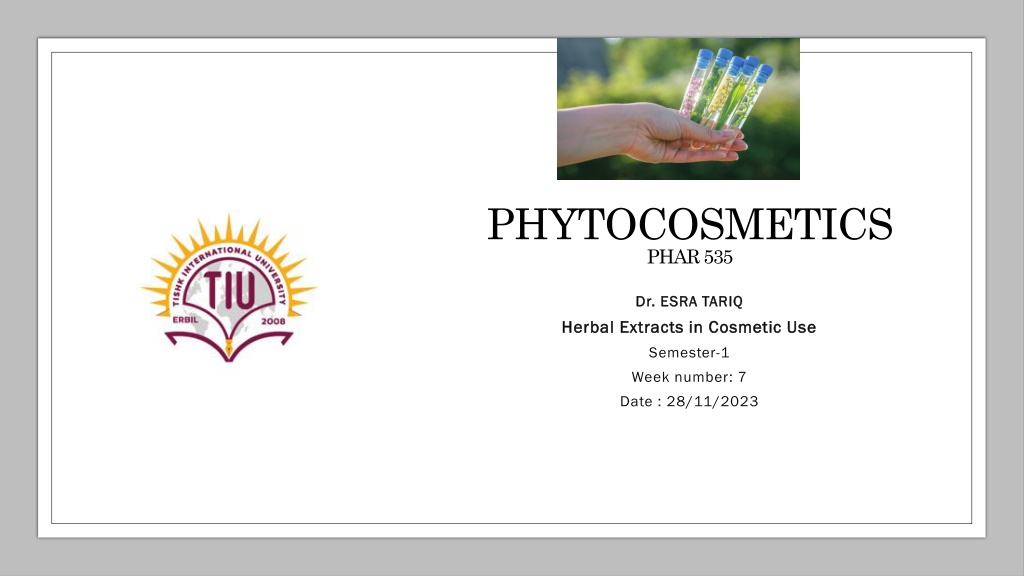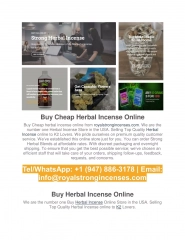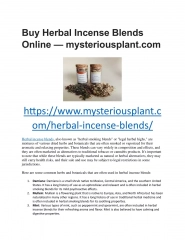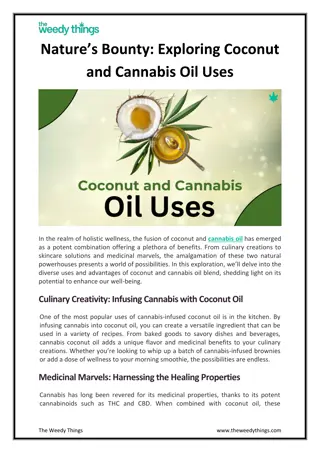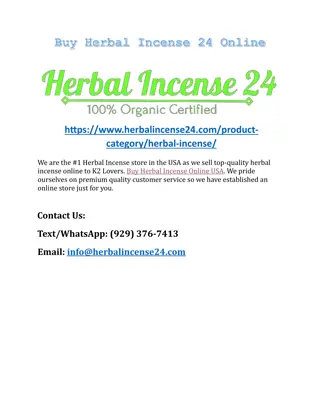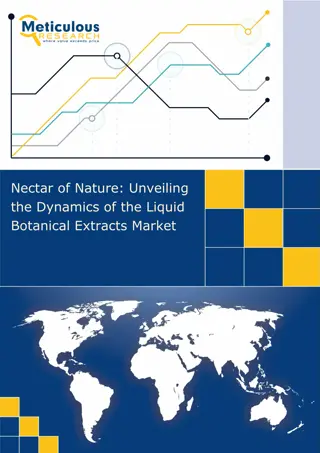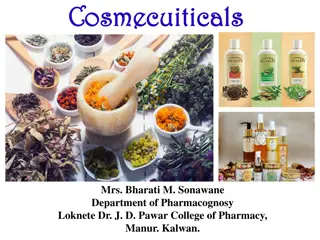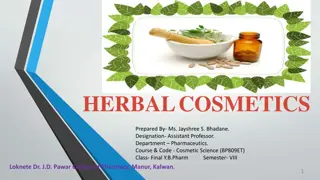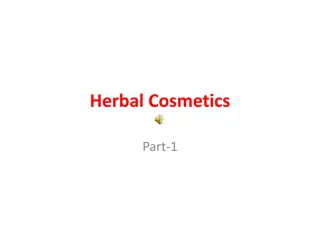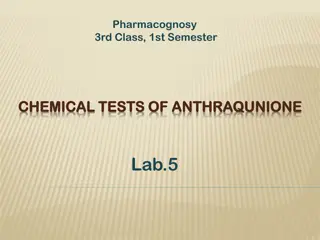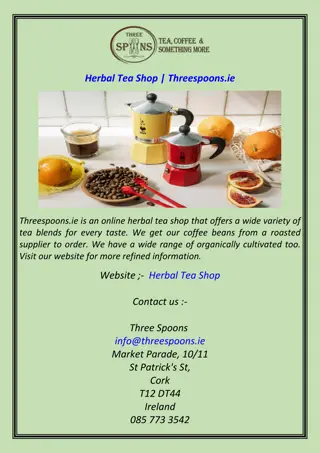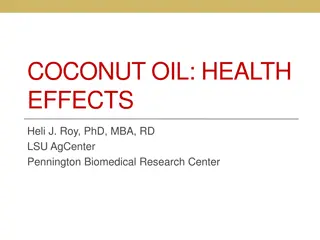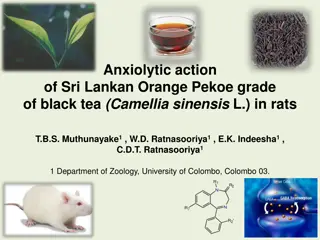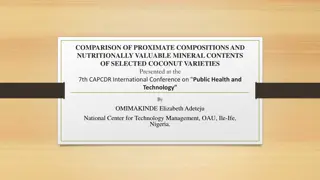Herbal Extracts in Cosmetic Use: Coconut, Green Tea, Aloe & More
Explore the benefits of herbal extracts in skin care with a focus on coconut, green tea, and aloe. Discover how ingredients like coconut oil, green tea catechins, and aloe vera gel provide nourishment, protection, and rejuvenation for the skin. Learn about their properties, uses in cosmetics, and therapeutic effects in preventing skin aging and disorders.
Download Presentation

Please find below an Image/Link to download the presentation.
The content on the website is provided AS IS for your information and personal use only. It may not be sold, licensed, or shared on other websites without obtaining consent from the author. Download presentation by click this link. If you encounter any issues during the download, it is possible that the publisher has removed the file from their server.
E N D
Presentation Transcript
PHYTOCOSMETICS PHAR 535 Dr. ESRA TARIQ Dr. ESRA TARIQ Herbal Extracts in Cosmetic Use Herbal Extracts in Cosmetic Use Semester-1 Week number: 7 Date : 28/11/2023
Outline Herbals in skin care
Herbal Skin Care Products Coconut Palm Scientific name: Cocos nucifera L. Family: Arecaceae Parts used: Fruit, seeds Coconut water contains sugars (4%), mainly glucose, fructose, and sucrose, while other components include malic and citric acids; proteins (0.1%); fats (0.1%); amino acids; vitamins, particularly vitamin E; and mineral salts (0.4%), of which the most abundant is potassium, followed by calcium and phosphorus, while iron is also relatively abundant. The fresh pulp of the seed is composed of lipids (about 35%) and sugars (about 10%), while in the dried copra the content of lipids is higher (about 70%).
Herbal Skin Care Products Coconut Palm Uses in Cosmetics The coconut oil is widely used in cosmetics and soaps due to its high content in lauric acid. The oil has a strengthening effect on hairs, mainly due to the presence of lauric acid glyceride The oil has emollient, rehydrating, and elasticizing properties, thus preventing wrinkle formation and other skin aging processes Products obtained from coconut water through a freeze-drying process stimulate tissue growth and are employed in rejuvenation treatments on the skin and scalp
Herbal Skin Care Products Green Tea Scientific name: Camellia sinensis (L.) Kuntze Family: Theaceae Parts used: Leaves It has been shown that the therapeutic properties of the plant are mainly due to catechins, and are primarily attributable to EGCG (pigallocatechin-3-gallate) Gallocatechins prevent UV ray injury on the skin and are therefore potentially useful against the development of skin tumors EGCG has been shown to protect keratinocytes from UV-B rays, preventing the activation o the AP-1 transcription factor. Moreover, EGCG also protects these cells from UV-A rays.
Herbal Skin Care Products Aloe Scientific name: Aloe vera (L.) Burm. f. (syn. A. barbadensis Mill., A. vulgaris Lam.) Family: Asphodelaceae Parts used: Leaves The plant gel and exudate have been used since ancient times as medicaments. In the procedure for gel extraction, the mechanical separation of the pulp from the leaf skin is not always complete The plant has been used to heal skin disorders for more than 2,000 years. The gel is present in a great variety of cosmetic and dermatologic products.
Aloe Its main application is for skin hydration in the treatment of dry skin. Skin hydration properties have been proved by transepidermal water loss (TEWL) measurements Performed on volunteers. Even though the gel does not act as a UV screen, it can prevent the arising of sun erithema. gel also reduces the production immunosuppression in keratinocytes The of interleukins that induce Besides protection from sun rays, the anti-inflammatory action of the gel makes it useful for eczematous conditions, while a clinical test has also shown beneficial effects on psoriasis. Aloe compounds must be avoided during pregnancy, lactation, and in newborns. The plant or the gel can cause allergy or contact and photodermatitis in sensitive subjects
Herbal Skin Care Products Argan Tree Scientific name: Argania spinosa (L.) Skeels Family: Sapotaceae Parts used: Seeds The seeds contain a large amount of oil, which can reach a value of more than 50%. The oil is composed of triglycerides (95%), mostly consisting of unsaturated fatty acids (30% linoleic). The unsaponifiable fraction consists of carotenes (37%), Vitamin E (8%), triterpenic alcohols (20%), sterols (20%), and xanthophylls (5%). The phenolic component contains benzoic, hydroxybenzoic, phenylacetic, and caffeic acids, while oleuropein, flavonoids, and their glycosides are also present.
Herbal Skin Care Products Argan Tree Argan oil has been used for centuries in the traditional medicine of Morocco to heal skin disease and as a vehicle for massage.10 Its properties make it a useful remedy for psoriasis, dermatitis, eczema, furuncles, acne, and chickenpox blisters. It is also recommended as an unguent for rheumatic diseases. The oil is indicated to contrast skin dehydration and for the treatment of wrinkles. It can also protect the skin against UV-B radiations.
Herbal Skin Care Products Chamomile Scientific name: Matricaria recutita L. Family: Compositae Parts used: Heads The essential oil contains lipophilic compounds, including terpenes, coumarins, and azulenes Chief components of the volatile oil are -bisabolol and derivatives, -trans- farnesene, and chamazulene The antiseptic and anti-inflammatory properties allow neutralization of skin irritations, and therefore, the plant is particularly indicated for sensitive skin The plant is moreover used for lightening treatments on head hairs
Herbal Skin Care Products Ginkgo Scientific name: Ginkgo biloba L. Family: Ginkgoaceae Parts used: Leaves Chief bioactive compounds are flavonoids, including flavonol glycosides, dimeric flavones, and amentoflavone, polyphenols gallocatechins); and anthocyanosides. (ginkgolic acids,cathechins, Cosmetic formulations based on extracts of the plant exert stimulating, tonifying, antibacterial, and antioxidant effects, and can be used to prevent or amend skin aging and cellulite
Herbal Skin Care Products Ginkgo The plant is also used in products that stimulate hair growth. Also in this case, the promotion of microcirculation seems to play a determinant role, by acting favorably on piliferous bulbs, and moreover inducing anti- inflammatory, antioxidant, and antibacteric effects. Due to its antioxidant properties, the plant can also be used to protect the skin from damage due to sun irradiation
Herbal Skin Care Products Mango Scientific name: Mangifera indica L. Family: Anacardiaceae Parts used: Fruit, seeds, leaves, bark The fruit contains protein, fat, carbohydrate, and minerals. Chief simple sugars are saccharose, fructose, and glucose.
Herbal Skin Care Products Mango The butter from seed kernel has soothing properties and heals a wide variety of skin eruptions, sores, and boils. The high percentage of tocopherol, phytosterols, and triterpenes suggests its supplemental use in cosmetics as a source for skin active ingredients. It is excellent as an ointment base, and has been observed to release salicylic acid at a remarkably greater rate than a standard paraffin-based ointment formulation.
Herbal Skin Care Products Rosemary Scientific name: Rosmarinus officinalis L. Family: Lamiaceae Parts used: Leaves, twigs, flowering apices The plant contains various antioxidant polyphenols, mainly phenolic diterpenoids, caffeol derivatives like rosmarinic acid and flavones Rosmarinic acid is an ingredient of various cosmetic formulations and perfumes
Herbal Skin Care Products Rosemary It has been shown that the plant s extract protects hairs from external injurious agents also due to its antioxidant properties The plant is therefore useful against various hair and scalp disorders, such as early baldness or dandruff, and is frequently used as a component of shampoos and lotions. The essential oil should not be used during pregnancy or by people affected by epilepsy or hypertension. It is known that various essential oils contain neurotoxins that can induce convulsions. The plant can be the cause of contact dermatitis.
References Peter Elsner, (2000). Cosmeceuticals , Drugs vs Cosmetics, Marcel Dekker, Inc. New York Basel TM Bruno Burlando, Luisella Verotta, Laura Cornara, Elisa Bottini-Massa, Herbal Principles in Cosmetics: Properties and Mechanisms of Action, 2010, CRC Press.
